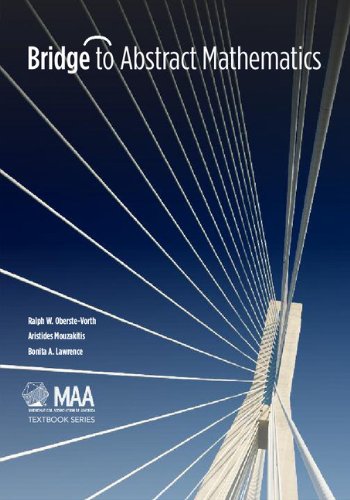

Most ebook files are in PDF format, so you can easily read them using various software such as Foxit Reader or directly on the Google Chrome browser.
Some ebook files are released by publishers in other formats such as .awz, .mobi, .epub, .fb2, etc. You may need to install specific software to read these formats on mobile/PC, such as Calibre.
Please read the tutorial at this link: https://ebookbell.com/faq
We offer FREE conversion to the popular formats you request; however, this may take some time. Therefore, right after payment, please email us, and we will try to provide the service as quickly as possible.
For some exceptional file formats or broken links (if any), please refrain from opening any disputes. Instead, email us first, and we will try to assist within a maximum of 6 hours.
EbookBell Team

0.0
0 reviewsA Bridge to Abstract Mathematics will prepare the mathematical novice to explore the universe of abstract mathematics. Mathematics is a science that concerns theorems that must be proved within the constraints of a logical system of axioms and definitions, rather than theories that must be tested, revised, and retested. Readers will learn how to read mathematics beyond popular computational calculus courses. Moreover, readers will learn how to construct their own proofs.
The book is intended as the primary text for an introductory course in proving theorems, as well as for self-study or as a reference. Throughout the text, some pieces (usually proofs) are left as exercises; Part V gives hints to help students find good approaches to the exercises. Part I introduces the language of mathematics and the methods of proof. The mathematical content of Parts II through IV were chosen so as not to seriously overlap the standard mathematics major. In Part II, students study sets, functions, equivalence and order relations, and cardinality. Part III concerns algebra. The goal is to prove that the real numbers form the unique, up to isomorphism, ordered field with the least upper bound; in the process, we construct the real numbers starting with the natural numbers. Students will be prepared for an abstract linear algebra or modern algebra course. Part IV studies analysis. Continuity and differentiation are considered in the context of time scales (nonempty closed subsets of the real numbers). Students will be prepared for advanced calculus and general topology courses. There is a lot of room for instructors to skip and choose topics from among those that are presented.